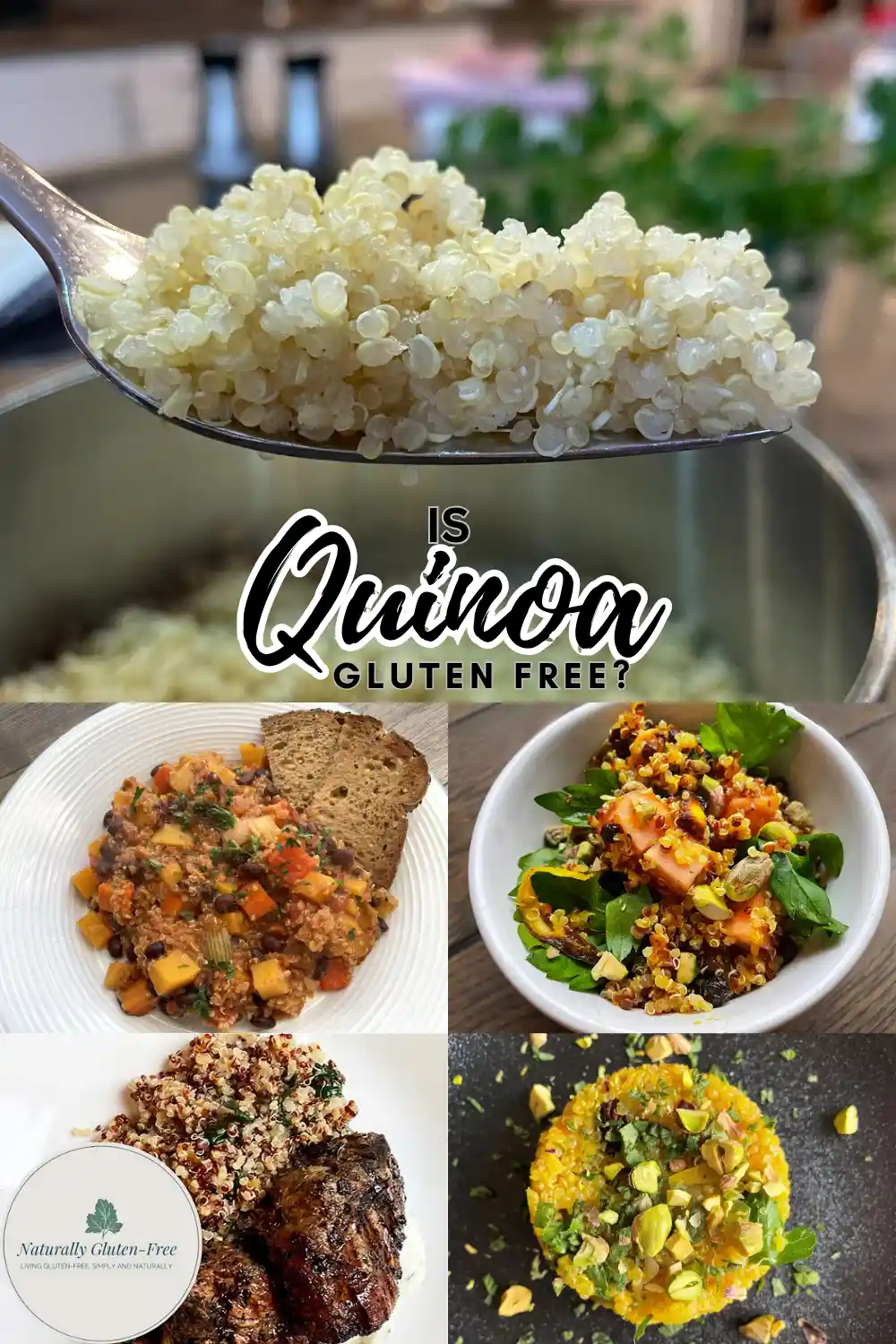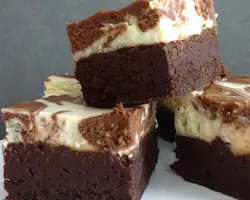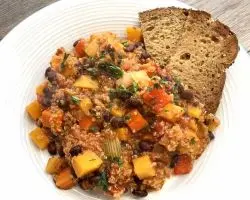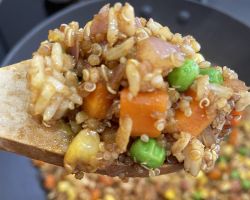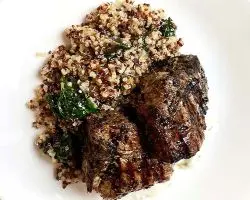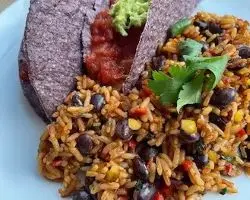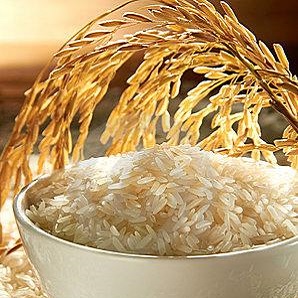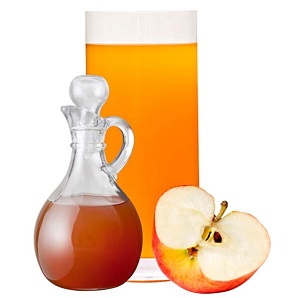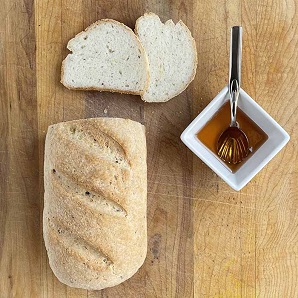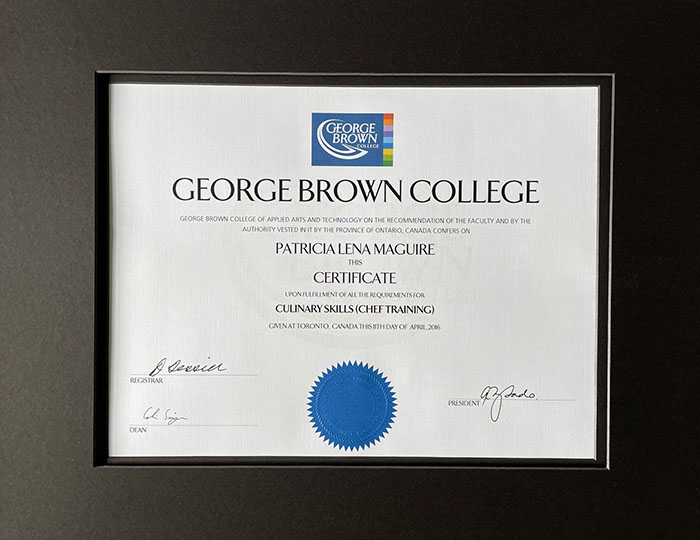- Home
- Gluten Free Grains
- Quinoa
Is Quinoa Gluten-Free? How to Buy, Cook and Enjoy Quinoa Safely
Are you worried that you’re not getting enough grains in your diet since you’ve eliminated wheat, rye and barley? Or are you bored with the common replacements? One can only eat so much rice.
Are you wondering “is quinoa gluten-free?”
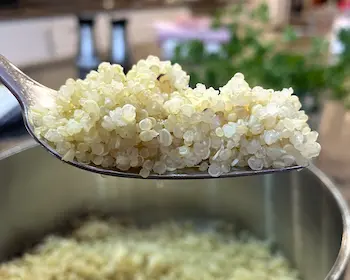
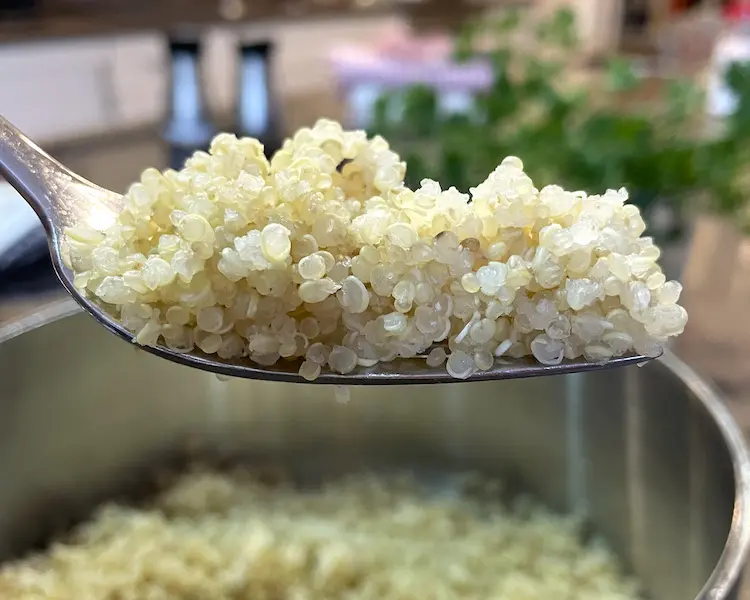
The short answer is yes, but there are some pesky little details to look out for.
In this article, we'll explore what makes quinoa such a fantastic addition to your gluten-free pantry. I'll walk you through the basics of what quinoa is, and give you practical tips for shopping, cooking, and enjoying this versatile grain alternative.
We'll also discuss potential risks like cross-contact during processing, and I'll answer the most common questions I hear from people who are new to eating gluten-free. By the end, you'll feel confident about incorporating quinoa into your meals and know exactly what to look for when shopping.
Table of Contents
What is Quinoa?
Quinoa is often called an ancient grain, but technically it's a seed that comes from a flowering plant. It's been cultivated in South America for thousands of years, particularly in countries like Peru and Bolivia1. The indigenous people of these regions have been enjoying quinoa as a staple food long before it became popular in North American health food stores.
You'll find quinoa in several varieties at the store, with white, red, and black being the most common. White quinoa has the mildest flavor and cooks the fastest, making it a perfect substitute for rice.
Red quinoa has a nuttier taste and holds its shape well in salads, while black quinoa has the strongest flavor and adds a beautiful color contrast to dishes.
I like to combine red and white quinoa to add color and flavor to my dishes.
Is Quinoa Gluten-Free?
Yes, quinoa is naturally-gluten free. Like other grains though, there is risk of cross-contamination in growing and processing. For this reason, both Celiac Canada and Beyond Celiac recommend to always look for a gluten-free label on quinoa and quinoa products2.
How to Buy Gluten-Free Quinoa
Over the years I’ve learned a few tricks for buying quinoa, and gluten-free grains in general.
You can find quinoa in most grocery stores in the gluten-free section or the “free from” aisle. It's also available in health food stores, bulk food stores (we’ll talk more about these in a minute) and online.
Always look for a gluten-free claim on the label.
If you buy online, it's not enough to look for a gluten free claim in the product description. Be sure to also check the label when the product arrives.
Can You Buy Quinoa from a Bulk Store?
Buying from bulk bins is risky. Customers may mix up scoops and open products can be contaminated by nearby gluten-containing items. But let’s face it, eating gluten-free can be costly, and wanting to save by buying in bulk is completely understandable. I do it myself.
These are the precautions I follow:
- I ensure that bulk quinoa is labeled gluten-free, it is a high risk product.
- I only buy from stores that have a gluten-free section. This reduces the risk of customers switching scoops.
- I ask the store manager what precautions they take to prevent cross-contamination.
- If in doubt, I ask if I can take what I need from a sealed bag. You can often buy large sealed bags from bulk stores as well.
Nutritional Benefits of Quinoa
In my nutrition studies I learned that quinoa is an extra special grain. It’s one of the few plant foods that is a complete source of protein. That means it has all 9 essential amino acids that our bodies can’t produce on their own. This makes quinoa especially valuable to anyone on a plant-based diet.
Quinoa is also an excellent source of fiber as well as iron, magnesium and B vitamins. These are all nutrients that people with celiac disease may struggle with due to intestinal damage.
Pin for Later
Cooking and Using Quinoa
You're going to be excited to find that quinoa will easily fit into your gluten-free meals! Here are some tips that will make it even easier.
Rinsing Quinoa for Better Flavor and Digestion
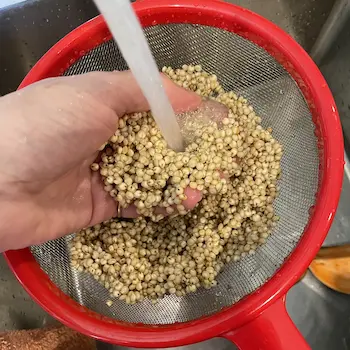
When I first started using quinoa, I found that it upset my stomach. I thought this was just another food intolerance until one of the chefs at culinary school told me about saponins.
Saponins are chemical compounds that form a coating on some plants, and they are present in quinoa. They can cause digestive upset and add a bitter taste.
I started rinsing my quinoa thoroughly before cooking and have not had any more issues.
Place your quinoa in a fine mesh strainer and run lots of cold water through it while rubbing the quinoa between your fingers. You may want to put a bowl or pot below the strainer to catch escaping grains.
Soaking Quinoa – A Optional Step to Try
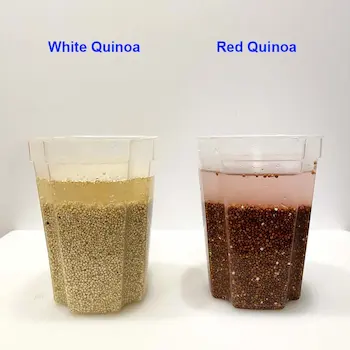
This is an optional step. I often skip this step simply because I tend not to plan far enough ahead. Heck, I have a hard time remembering to take meat out of the freezer for the next nights dinner. But if you're organized enough, you may want to try.
Soaking quinoa softens the grain, removes saponins and creates a milder flavor. Cooking time will be reduced.
Simply place your quinoa in a container of warm water, then into the refrigerator for 2 hours or up to overnight.
Cooking Quinoa – It’s Just Like Rice
The cooking instructions will be on the package, but it’s pretty simple. You need a 2 to 1 ratio of liquid to quinoa, just like rice. This means 2 cups of water or broth for every cup of quinoa.
- Bring the liquid to a boil.
- Add your rinsed quinoa.
- Reduce the heat to low and put the lid on the pot.
- Simmer for about 15 minutes then turn off the heat and let it sit for another 5 minutes with the lid on.
You know it’s done when it looks light and fluffy, and you can see the little tails.
Baking With Quinoa Flour
As with any grain (or in this case pseudo grain) quinoa can be made into flour. And quinoa flour has all the nutritional benefits of the seed it comes from.
Since quinoa flour is fairly heavy and robust, it is often used in combination with lighter gluten-free flours like rice flour or with starches like tapioca, potato or arrowroot starch.
Since I don't often use quinoa flour myself, I reached out to a fellow Canadian Gluten-Free Blogger Cinde Little - The Everyday Gluten-Free Gourmet.
Check out her Chocolate Cheesecake Brownies made with quinoa flour.
How to Use Quinoa in Your Daily Gluten-Free Meals
Quinoa, like rice, is an extremely versatile grain, with the added benefit of being a nutritional powerhouse. It has a unique mild, nutty flavor and can be used wherever you use rice.
For example:
- Use quinoa in salads, tabouleh style. Or try adding it to a tossed garden salad, kale salad or even to a Caesar salad in place of croutons.
- Enjoy quinoa as a hot breakfast cereal in place of oats. Cook it in milk or a plant based milk alternative, then add chopped fruit and a little honey or maple syrup. Try it with my Maple-Nut Granola.
- Quinoa makes a great side dish as an alternative to rice, or mix it with rice for a milder, more familiar flavor. Try replacing half the rice with quinoa in my Fried Rice or Mexican Rice recipes.
- Add a small handful of quinoa to your favorite gluten-free soups or stews. It pumps up the nutrition and adds a chewy texture and hardiness to your dish.
- In baking, quinoa flour works will in breads, muffins and pancakes. It’s high protein content and nutty flavor makes it a good replacement for wheat flour.
- Quinoa is also made into pasta. Look for it in the "free from" aisle or your local health food store.
Recipes Using Quinoa
A hardy and spicy-as-you-like chili that's vegan and gluten-free!
My classic Fried Rice recipe with ½ quinoa and ½ brown rice.
Authentic Mediterranean with a gluten-free twist.
Gluten-Free Mexican Rice with Quinoa
Mix quinoa with tender long grain rice in a delightful blend of tomato, onions, and peppers, then bring it to life with a flavorful mix of spices. Add black beans and yellow corn for a pop of color and a punch of protein.
Frequently Asked Questions
Q: Is quinoa flour gluten-free?
A: Yes, just be sure to look for a gluten-free claim on the label. This ensures that there are no cross-contamination issues during growing or processing.
Q: Can people with celiac disease eat quinoa?
A: Yes, Quinoa is definitely safe for celiacs so long as it has a gluten-free label. It’s especially valuable to us due to it’s nutritional content.
Q: What are the best gluten-free brands of quinoa?
A: I’m not stuck on a particular brand though I am generally a fan of Bob’s Red Mill. Their quinoa is very good and certified gluten-free. In Canada We have President’s Choice Organics quinoa. Also a good product that carries a gluten-free label
Final Thoughts
Have I convinced you to add gluten-free quinoa to your diet? For me, it’s a pantry essential. It’s a great change from same old, same old rice and the nutrient value is through the roof. If you haven’t tried it, I encourage you to pick up a bag on your next shopping trip or order some online and experiment. Sub it in anywhere you would use rice.
Sources
1. Wikimedia Foundation. (2025, June 24). Quinoa. Wikipedia. https://en.wikipedia.org/wiki/Quinoa
2. Association, C. C. (2024, January 9). Food labelling. Celiac Canada. https://www.celiac.ca/living-gluten-free/food-labelling/
